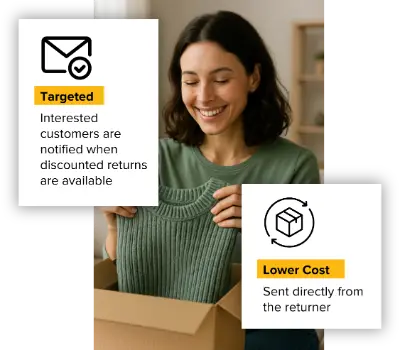How to Grow Sales on Walmart With Two Day and Three Day Delivery

Last updated on February 26, 2025
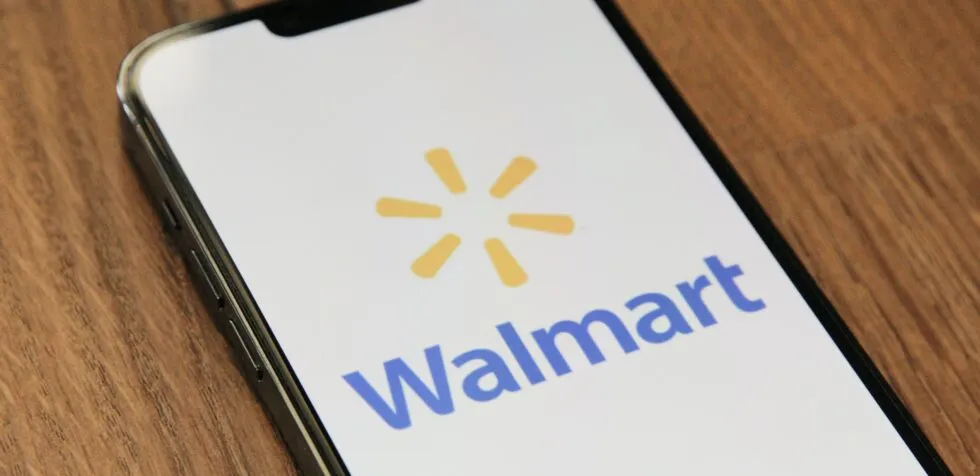
In this article
 18 minutes
18 minutes
- What is TwoDay and ThreeDay Delivery?
- What Benefits do the Two Day and ThreeDay Tags Give?
- How To Qualify for TwoDay and ThreeDay Delivery
- Walmart Seller Performance Standards
- Offering TwoDay Delivery: Walmart Fulfillment Services
- Offering TwoDay Delivery: ShipBob
- Offering TwoDay Delivery: Flexport (Deliverr)
- Offering TwoDay Delivery: Your Own Warehouses
- Offering TwoDay Delivery: Cahoot
- Conclusion
- Frequently Asked Questions
For many sellers in ecommerce, Amazon has long been the platform that they simply could not ignore. However, in recent times, another channel has emerged. Walmart is arguably America’s most well known retailer – the company has a sprawling footprint of around 4,615 physical locations in the US alone. Recent developments, including the rise of Amazon and the Covid-19 pandemic have pushed the Arkansas-based retailer into investing more in ecommerce.
Walmart’s ecommerce accounts for 18% of its total sales volume and expects its ecommerce business to continue to grow significantly, as it has grown over 10% year over year for the last 4 years. The company’s Chief Financial Officer John David Rainey acknowledged that the majority of the company’s profits come from its physical stores. However, he expects ecommerce to continue to grow significantly in the coming years, outpacing Amazon growth. To that end, the company has invested $7.2 billion in supply chain, omnichannel and technology infrastructure. Early results from the company are promising – in the second fiscal quarter of 2024, ecommerce sales grew 24% (compared to 6.4%) for comparable in-store sales. The company also reported that active digital users grew 20% in the quarter. 95% of American consumers visit Walmart stores at least twice a year. While Walmart crossed 150,000 third party sellers on its marketplace as of May 2022, that number pales in comparison to the 1.9 million that Amazon has. However, one thing is certain – Walmart is likely to continue growing investments in ecommerce, and take advantage of the enormous shopper base their physical locations attract. This represents a growing base for ecommerce brands and merchants to sell to.
However, just like Amazon, free and fast shipping is almost a prerequisite for success. On Amazon, customers apply the Prime filter when shopping just to see products that come with fast delivery. In many ways, shipping is no longer a back office operation, it has become central to today’s customer experience. Walmart allows sellers to gain competitive advantages by offering TwoDay and ThreeDay delivery.
In this article, we’ll take a look at what benefits TwoDay and ThreeDay delivery offers on the marketplace, what it takes to earn the TwoDay fast shipping badge, how to ensure you’re compliant with the seller performance standards and some options available to merchants to offer fast Walmart fulfillment.
Slash Your Fulfillment Costs by Up to 30%
Cut shipping expenses by 30% and boost profit with Cahoot's AI-optimized fulfillment services and modern tech —no overheads and no humans required!
I'm Interested in Saving Time and MoneyWhat is TwoDay and ThreeDay Delivery?
As their names suggest, TwoDay and ThreeDay delivery tags are applied to offers on Walmart which feature free delivery to customers in two or three business days.
In a world where customers are constantly comparison shopping across brands, listings and marketplaces, free and fast shipping provides strong competitive advantages. In many cases, customers choose knockoff or imitation products over superior alternatives simply because of faster delivery.
The Delivery Tags are a great way to gain prominence on the marketplace, distinguish yourself from competitors and to build customer lifetime value through repeat purchases.
What Benefits do the Two Day and ThreeDay Tags Give?
The important thing to understand is that the two day and three day delivery options are slightly different from each other in a few, significant ways. In each section, we’ll examine the difference between them and what benefits sellers get from each.
|
Feature |
ThreeDay |
TwoDay |
|---|---|---|
|
Increased conversion |
As high as 30% |
As high as 50% |
|
Buy Box Prominence |
Yes |
Yes |
|
Increased Search Ranking |
No |
Yes |
|
Filter Inclusion |
No |
Yes |
|
Fast Delivery Tag |
No |
Yes |
High Conversion Lift
The single biggest advantage sellers get from offering customers TwoDay or ThreeDay delivery is the increased conversion. In Walmart’s words, these are the conversion lifts that sellers can expect to see with these delivery offerings:
Boosts Search Rank and Discoverability
Many sellers are already familiar with Amazon’s A9 algorithm. For those not aware, the A9 algorithm factors in a variety of criteria to rank listings on search results in the Amazon marketplace. In a similar fashion, Walmart has what it calls a “Listing Quality Score”. The algorithm applies weights to different criteria (such as price and shipping speed) before ranking listings on search results.
Offering two day or three delivery, and earning fast delivery tags go a long way toward improving your Listing Quality Score, improving metrics such as Buy Box win rates and search rankings. Here’s the difference according to Walmart:
The filter inclusion is similar to the filter Prime shoppers apply when browsing the Amazon marketplace just to see Prime eligible listings.
Fast Shipping Badges
On marketplaces like Walmart, customers have almost infinite choice – fast shipping badges are a great way to stand out and quickly become the preferred listing for customers.
Here’s what you get with TwoDay and ThreeDay:
How To Qualify for TwoDay and ThreeDay Delivery
Now that we’ve taken a look at all the benefits that the two badges offer, let’s examine what actually needs to be done to qualify for these options.
ThreeDay Delivery
For ThreeDay Delivery, sellers need to perform no extra work! They can simply configure a shipping template with “Standard” shipping method and then pick a transit time of 3 days.
Sellers can configure their shipping template in the Walmart Seller Center.
TwoDay Delivery
Sellers aiming to achieve two day speeds on their Walmart fulfillment (and earn the fast shipping badge that comes with it) have 3 different options available to them:
- Use Walmart Fulfillment Services
- Work with Walmart’s partners – ShipBob or Flexport
- Ship yourself (using your own warehouses or 3PL).
If you’re choosing to use your own fulfillment, you will need to meet these requirements:
- Have been a seller on Walmart for 90 days or fulfilled at least 100 orders
- Maintain an on-time shipping and delivery rate greater than 95%
- Maintain a valid tracking rate greater than 95%
- Have a cancelation rate lesser than 1.5%
- Offer free returns
Let’s assume you do what it takes and you’re now selling more with your fast delivery tags – great! But as sellers know, it’s crucial to stay on top of the requirements of the marketplace to ensure you retain your fast shipping badges and keep your listings active. Here’s what sellers need to do on Walmart:
Looking for a New 3PL? Start with this Free RFP Template
Cut weeks off your selection process. Avoid pitfalls. Get the only 3PL RFP checklist built for ecommerce brands, absolutely free.
Get My Free 3PL RFPWalmart Seller Performance Standards
As per Walmart’s seller help documentation, these are the requirements that merchants on its platform must adhere to; sellers must ensure their products are delivered on time and in good condition. This includes providing accurate tracking information and maintaining a low rate of order cancellations and returns. Additionally, sellers using freight services must ensure timely delivery to maintain performance standards. Let’s look at these points in detail:
On-Time Delivery Rate
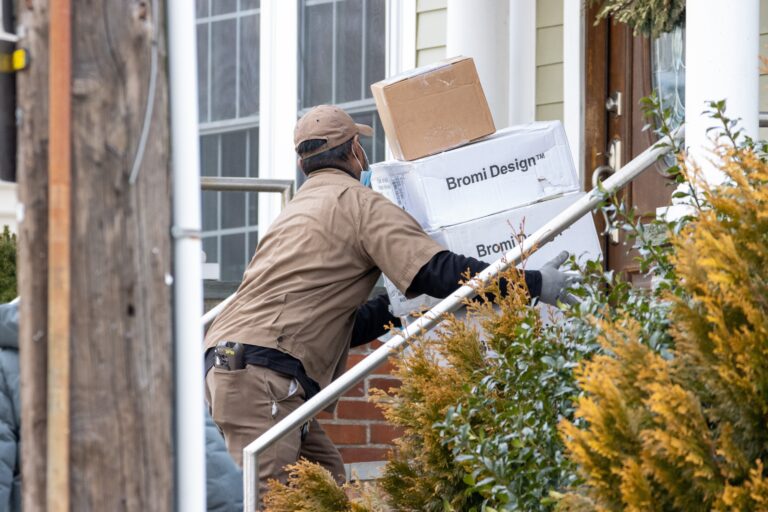
Sellers must maintain an On-Time Delivery Rate greater than or equal to 95%. To give this some perspective, let’s compare this against a program like Seller Fulfilled Prime.
While SFP has more demanding speed metrics (expecting roughly 30% of orders on standard sized SKUs to be delivered within 1 calendar day), Walmart has higher on-time delivery expectations. SFP expects only 93.5%, while Walmart expects 95% on-time delivery.
This means that you need to find partners with order fulfillment networks that have warehouses at multiple strategic locations, so that you can shorten the distance to your customers and make your Walmart fulfillment faster.
The only downside is that this leaves sellers at the mercy of the carriers, such as USPS, UPS and FedEx. Their ability to deliver products accurately and on time becomes important.
Valid Tracking Information
Sellers must maintain a Valid Tracking Rate greater than 99%. This requires strong technology and integrations between your fulfillment platform and Walmart. Whenever you receive orders, your systems must write back tracking information automatically to Walmart.
Make sure that you check your fulfillment partner has solid technology and 2-way integrations (such as Cahoot’s with Walmart) that fetch and push important information.
Refund Rate
Sellers must maintain a refund rate less than 6%. This applies to reasons that the seller is responsible for, such as items being damaged or incorrect items being received.
It is essential that you identify fulfillment partners with checks, balances and procedures to prevent such issues. For example, Cahoot has scan-verification technology to nearly eliminate the possibility of incorrect items being picked and packed. Additionally, you need to ensure that your fulfillment partner has excellent pick-pack and order fulfillment practices to package items well, following all relevant guidelines and procedures. Warehouses on the Cahoot network must pass a 44 point checklist before they can begin fulfilling orders for sellers – ensuring industry leading fulfillment standards.
Cancel Rate
Brands must maintain a seller-initiated cancel rate of less than 2%. Such events can commonly occur when orders are received on items that are actually out-of-stock.
Cahoot has a powerful integration with Walmart that pushes back inventory count information. Additionally, the system also comes with dashboards that provide color-coded alerts about your inventory levels (yellow to indicate it’s time for replenishment, and red to indicate that it needs to be done in a hurry!) This ensures you can minimize stock-outs.
Additionally, if you’re fulfilling from multiple locations, make sure that your software has intelligent exception management capabilities to handle problems at one node. If stock-outs or bad weather occur, you can still keep your promise to customers if your shipping software intelligently reroutes orders to other locations.
Seller Response Rate
Sellers must respond to customer inquiries that they receive within 48 hours, more than 95% of the time. The reason for this is obvious – Walmart is positioning itself as a serious challenger to Amazon, which has built a reputation for stellar customer experience. Walmart expects its sellers to offer customers a similar quality of service.
Offering TwoDay Delivery: Walmart Fulfillment Services
Walmart Fulfillment Services is the retailer’s inhouse logistics network, using which you can make your listings eligible for TwoDay Delivery. Let’s take a look at its pros and cons.
Pros of using WFS
Just like using Fulfillment By Amazon makes your listings eligible for Prime automatically, using WFS earns you TwoDay Delivery. There is no requirement to meet the qualification criteria.
As Walmart invests in growing its ecommerce capabilities, supply chain infrastructure building will be a key focus area. With 31 fulfillment centers dedicated to ecommerce as of June 2022, the company’s warehouse footprint ensures that it is possible to achieve nationwide two day delivery.
According to comparisons between Amazon FBA and Walmart WFS, the two programs are relatively level with each other on fulfillment fees. Sellers already used to working with FBA might see savings on some SKUs with WFS, while others might be cheaper on FBA.
The broad implications for sellers are similar to those with Amazon. For fast moving SKUs with minimum storage times that are small or lightweight, WFS will offer great rates. For big and bulky items, you may be able to find better alternatives offering more competitive rates. The real pain with programs like FBA and WFS is seen on long-tail or slow moving SKUs. When items don’t leave a Walmart Fulfillment center quickly, storage fees can rapidly eat into your margins.
Sellers must choose whether to work with WFS or look for alternative providers based on careful analysis of their specific product catalog.
Cons of using WFS
Possibly the biggest limitation of WFS is that it is restricted to just your Walmart orders. This means you’ll probably need to continue using FBA for Amazon, while you seek out another partner for your Fulfillment By Merchant (FBM) or Seller Fulfilled Prime (SFP) orders. You’ll also have to check if this partner supports other sales channels, such as Shopify (DTC), eBay or Target. Finding such a partner becomes harder if you’re selling to other retailers like Nordstrom or Macy’s, and require B2B replenishments as well.
WFS does not offer competitive pricing for big and bulky items. Additionally, their storage fees make the service impractical for slow-moving or long tail SKUs.
For a seller with a SKU mix that features these types of items, WFS may not make a lot of sense.
You’re already used to sending your inventory to FBA warehouses. That has caused sellers significant headaches with inventory receiving delays and damages in transit. If you use WFS to handle Walmart, you’ll have to repeat all your inbounding processes that you did for FBA – if you sent your items to an Amazon warehouse in California to handle West Coast orders, you’ll have to do it again to a Walmart Fulfillment Center. You’ll have to learn Walmart’s guidelines and processes for receiving inventory and get used to working with another partner.
While Walmart’s warehouse network is smaller compared to Amazon, they also face similar problems – a large number of sellers vying for limited spaces. This means you’ll face peak season surcharges for storage.
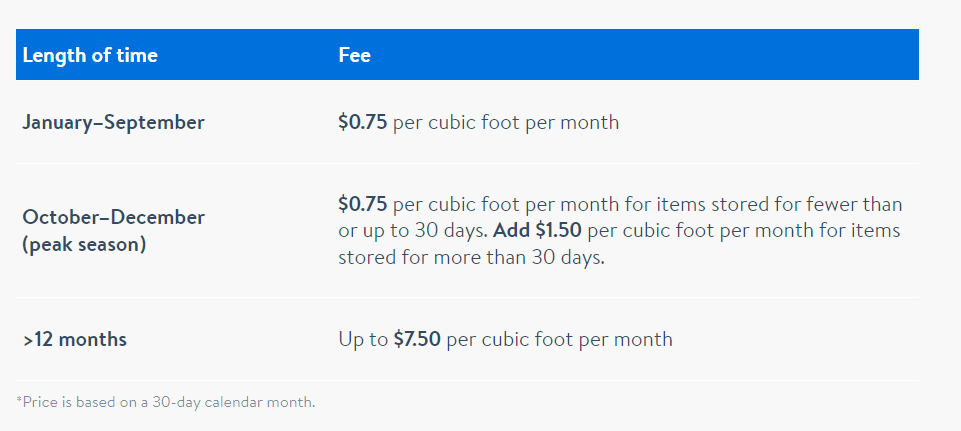
image courtesy: Walmart Fulfillment Services
This illustrates the problem – if you don’t have a SKU that is fast moving, you’re in trouble. This means storage fees triple on SKUs that have been sitting in Walmart Fulfillment Centers for more than just 30 days! For SKUs that have been sitting for more than a year in their warehouses, the rates can be even more expensive.
Scale Faster with the World’s First Peer-to-Peer Fulfillment Network
Tap into a nationwide network of high-performance partner warehouses — expand capacity, cut shipping costs, and reach customers 1–2 days faster.
Explore Fulfillment NetworkOffering TwoDay Delivery: ShipBob
Pros of Using ShipBob
As ShipBob is one of Walmart’s approved partners, brands that use them can instantly activate TwoDay delivery.
ShipBob has a global network of warehouses. This allows them to spread inventory across multiple locations to reach customers within the two day window.
Cons of Using ShipBob
ShipBob operates their own warehouses. While this may provide them control, it also places significant fixed costs and assets on their bottom line. With leasing rates, warehouse worker wages and carrier rate increases all going up, they may have no choice but to pass on the increased costs to their customers.
On the other hand, asset-light, powerful models like Cahoot’s fulfillment network are designed from the ground up to save customers more. In our experience, 9 out of 10 ShipBob customers see savings when they switch to Cahoot.
As this article explains, ShipBob customers have complained about times when they’ve found it difficult to get hold of someone from the company to fix their issues. Walmart does not hold 3PLs accountable for issues with deliveries, it holds you, the merchant, directly responsible.
Offering TwoDay Delivery: Flexport (Deliverr)
Pros of Using Flexport (Deliverr)
As one of Walmart’s official providers, you get instant access to TwoDay delivery.
With over 80 Warehouses, Flexport’s DTC offering (formerly Deliverr) has the scale required to support nationwide 2 day delivery.
Cons of Using Flexport (Deliverr)
Deliverr’s rates are not competitive for big and bulky or oversized items. If a lot of your SKUs are in this category, you might need to evaluate other options.
Since the exit of Dave Clark from Flexport, the company has been facing significant challenges internally. With recent reports that the company plans to lay off as much as 20% of their workforce, prospective customers might be nervous about the ability of the company to keep up its service levels and customer experience.
“The real difference-maker for us with Cahoot was [that Cahoot works] across the board and that regardless of where a consumer is, they can get their product in two days. The Cahoot full-service solution simplifies our operations and upgrades our delivery experience at the same time.”
~ Cali’s Books (switched from Flexport to Cahoot)
Speak to a fulfillment expert
Offering TwoDay Delivery: Your Own Warehouses

Pros of Using Your Own Warehouses
You make the rules, you play by them! Having your own fulfillment operations frees you from having to rely on anyone else for fulfillment.
If you can manage your fulfillment for WFS, that allows you to scale the same for your other sales channels and online marketplaces. You don’t need to inbound inventory multiple times. It allows you to become leaner and manage your inventory much more efficiently.
Cons of Using Your Own Warehouses
With warehouse lease rates, worker wages and carrier GRIs all on the rise, it has rarely been more difficult to absorb the last-mile costs associated with making deliveries.
A brand aiming to cover the continental US with 2 day shipping requires at least 4 strategically located warehouses (a strategically located warehouse is one that is close to a major population center of the US – such as the Northeast, Southern California, Chicago Midwest region and Texas). This can be a significant drain on your resources. Even for very large brands, the economics are proving hard to justify.
When you bring fulfillment operations in-house, the complexity of running your own logistics can overtake your focus on the activities that actually matter – selling and taking care of your customers.
Running your own fulfillment operations can leave you drowning in busy work and process management.
Offering TwoDay Delivery: Cahoot
Pros of Working with Cahoot
Cahoot has one of the largest warehouse networks in the US. We have 100+ warehouses, rivaling Amazon’s 110 fulfillment centers. Other providers, including Walmart themselves and ShipBob do not have as many warehouses.
Such a huge network offers certain advantages.
The first is that we have warehouse locations that work for nearly any brand. Different brands see orders coming from different regions. Brands selling well-established, commodity-style products might see most of their orders come from the major population centers, such as the Northeast and Southern California. On the other hand, someone selling surfing gear might see most orders come in from Florida and California. Similarly, someone selling skiing and winter sports equipment might see most of their orders come from Colorado or Vermont.
Whatever the geographic spread of your customer base, we’ve got warehouses that can deliver products to your customers in 1 or 2 days using economical ground shipping.
The second is that our vast network allows us to scale to meet the requirements of extremely challenging programs, such as Amazon Seller Fulfilled Prime. What’s challenging for other providers isn’t for us.
While other providers may not have the best rates across all SKU sizes, we have competitive pricing for all types of items – small, fast-moving, big and bulky, long-tail and seasonal.
While the likes of WFS and Flexport may become more expensive for oversized items, Cahoot offers competitive rates across the size spectrum. We also have a good track record of offering ShipBob customers meaningful savings on their current shipping fees.
This ensures that you’ll keep fulfillment costs under control and get back more savings to focus on growing your business.
“We onboarded with Cahoot at the beginning of Q4 with the single goal of reducing our 3PL costs. We have been happy to see considerable savings on SPD costs instantly. The team continue to work with us to ensure we distribute our inventory to the right locations across the US to reduce our SPD label costs. Rather than buying an app or a service, it feels like we have begun a great partnership with the Cahoot team who have a genuine interest in helping our business to succeed.”
~ QUICKPLAY Sport
Speak to a fulfillment expert
With WFS, you’ll have to work with multiple partners to handle your fulfillment across different sales channels. Cahoot is out-of-the-box integrated with all leading online marketplaces and shopping cart platforms. We also support B2B replenishments. You can use Cahoot as a one-stop shop for fulfillment, ensuring that you can run lean on inventory and streamline your operations.
Lastly, working with a partner like Cahoot cuts down the number of relationships you need to manage, freeing your team from process management and busy work. Working with a trusted full-service partner is also better than running your own fulfillment operations. You’ll reclaim time, resources and bandwidth to focus on activities that grow your brand, rather than get caught in the complexity of managing logistics.

When comparing providers like ShipBob, Flexport and Cahoot, the quality of customer support matters. There are many advantages to working with a partner rather than Walmart directly, because of their ability to handle fulfillment on other channels. But the key thing to remember is that Walmart holds brands directly responsible for any issues with shipping. And while fulfillment is crucial to business operations, things don’t always go as planned. That’s why it’s important to quickly get help when you need it. Cahoot’s US based team is always ready to offer assistance when you need it, ensuring minimal downtime for your business.
Cons of Working with Cahoot
cahoot offers the most benefits to merchants with some degree of traction, who are currently shipping at least 250 orders a month (roughly 10 packages a day).
Once merchants cross the initial phase, we can help them scale operations with our powerful network and technology.
Conclusion
Like with Amazon, offering free and fast shipping is critical to succeeding on the Walmart marketplace. Offering TwoDay and ThreeDay delivery has a number of advantages – including improving buy box win rates, rankings in search results and most importantly, conversion lift. Merchants have a number of options available to offer two and three day deliveries, including using Walmart Fulfillment Services, their inhouse logistics, ShipBob, Flexport or Cahoot. It’s important for merchants to identify partners with both a large warehouse network, as well as competitive rates across the size spectrum. It’s also important to look for providers that bring full-service capabilities beyond just the Walmart channel, so that sellers can cut down the number of providers they have to work with to manage their logistics. This has the added benefit of streamlining inventory management. Lastly, sellers should make sure to pick a fulfillment partner that offers reliable, responsive support. After all, you’re accountable to Walmart, not your 3PL!
With the nation’s largest retailer now aggressively investing in ecommerce, it’s a perfect time for all sellers and brands to bring their products to Walmart. The key is doing so in a way that keeps complexity and costs low, while growing sales with free two and three day deliveries on every order.
Frequently Asked Questions
Can I charge customers a shipping fee with TwoDay Shipping?
No, Sellers cannot charge shipping fees while using TwoDay Shipping.
Do I need to apply TwoDay Shipping to all my products?
No. Once approved for TwoDay Shipping, Walmart does not require sellers to apply it on all products.
Does Two Day Shipping include weekends?
No. Weekends and holidays are not included in Walmart TwoDay Shipping.
Turn Returns Into New Revenue
